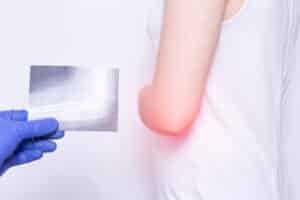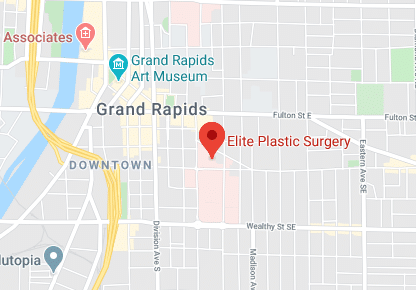
But what about cubital tunnel syndrome? Probably never heard of it, huh?
This other “syndrome” needs a better agent, as it can be a painful condition that affects the elbow, arm, and ring and pinkie fingers. It is caused when the ulnar nerve that passes through the cubital tunnel becomes compressed. If you play hockey, cubital tunnel syndrome can develop from the contact of ice on stick and with lots of stickhandling. Golfers can get it during our awesome Michigan golf season.
Our Elite team treats cubital tunnel syndrome with various conservative methods. If these don’t alleviate the problem, our five board-certified hand surgeons may need to perform surgery.
What is the ulnar nerve?
The arm has three main nerves: the median nerve, the radial nerve, and the ulnar nerve. The ulnar nerve travels from your neck down into your hand. On this path, it can become constricted in several places along the way, such as beneath the collarbone or at the wrist. But the most common spot for compression is behind the inside part of the elbow.
At the elbow, the ulnar nerve travels through a tunnel of tissue called the cubital tunnel. Not exactly like the Windsor Tunnel under the Detroit River, this tunnel runs under a bump in the bone at the inside of the elbow, called the medial epicondyle. The spot where the nerve runs under the medial epicondyle is commonly referred to as the funny bone. At this spot, the nerve is relatively close to the skin, so bumping this area causes a shock-like feeling, hitting your “funny bone.”
After it passes the elbow, the ulnar nerve travels under muscles on the inside of your forearm and into your hand on the outer side of the palm (away from the thumb).
What does the ulnar nerve control?
The ulnar nerve allows us to sense feeling in the little finger and the outer half of the ring finger. It also controls most of the muscles in the hand that control fine movements. It also controls some of the bigger muscles that allow us to make a strong grip.
What causes the compression?
The ulnar nerve is susceptible to compression at the elbow where it travels through a narrow space with little soft tissue to protect it. In many cases, there isn’t a direct cause/effect for cubital tunnel syndrome, but these are common causes of compression in the ulnar nerve at the elbow:
- When your elbow is bent, the ulnar nerve must stretch around the boney ridge of the medial epicondyle. This stretching can irritate the nerve, resulting in numbness in the fingers. This can occur when your elbow is bent for long periods of time, such as sleeping with your elbow bent.
- The nerve can slide out from behind the medial epicondyle when the elbow is bent. Repetition of this causes irritation. This is where golfers and hockey players can develop cubital tunnel issues.
- Leaning on your elbow for long periods of time puts pressure on the nerve.
- Fluid buildup in the elbow can cause compression.
When it becomes serious
Everyone has occasional tingling and numbness in his or her pinky and ring finger associated with the ulnar nerve. But, if the condition lasts or the symptoms are severe, you run the risk of muscle wasting that is irreversible.
At Elite, our team employs a variety of conservative treatments for cubital tunnel syndrome. If these don’t prove effective, and you still have nerve problems, our board-certified hand surgeons may need to perform a cubital tunnel release surgery.
If you have tingling in your pinky and ring finger that endures, call us at Elite Plastic Surgery, (616) 459-1907, and set up a consultation.


Comments are closed.